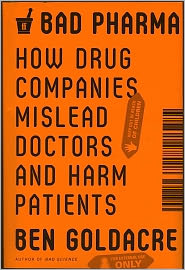The corrective strategy
Test. Apply a corrective exercise. Re-test. This concept is HUGE. The test/re-test process is just massively important in any situation (technology, medicine, cooking, and yes, human movement) if you want to know if a particular intervention works. Dr. Eric Cobb of Z-Health first introduced the importance of the test & re-test to me. The concept is equally important in the FMS. What does it mean and what does it look like?
We can test all sorts of things. We can test a movement pattern for pain or tightness. As it pertains to the FMS, we want to at some point test and re-test the seven different movement patterns. Beyond that, I could use stepping up and down stairs to test for knee pain. We could bend forward or backward to test for back pain. I could go into a hip flexor stretch on each leg to compare tightness in each thigh. I could stand on one leg to test balance. If you’ve got some sort of difficulty with a particular exercise then that’s a test. So we test something. Then we apply some sort of corrective. Then we re-test.
We might foam roll and/or stretch to increase mobility of a joint. Then we could re-test. Did anything change? We might then employ a stabilization exercise. Then we re-test. Did things improve or not? We could move from static stabilization to dynamic stabilization, that is, we can look at stabilizing a joint while moving other joints. If we see improvement and it holds, then we should practice our new and improved movement. A phrase I heard at the FMS is “Move well then move often.” We want to ingrain these new, good movement patterns. We want to make them habitual. If we load the movement pattern with weights then we look to get stronger in these new movement patterns. We can continue to re-test over the course of time to ensure we haven’t regressed back to poor movement.
My strategy: addressing the ankle, knee and hip
Some of my years-long issues regarding my low back, my right knee and left heel/Achilles are still lingering. These issues aren’t terrible and they hardly limit me but I still would like to clean them up a bit. My right hip tends to be tight. I have intermittent moderate right lateral knee pain. My left calf tends to be tight. I’ve got some impingement in my right ankle. Fortunately, my FMS score is a solid 18 out of a possible 21 which means that it’s safe to exercise and work out vigorously.
Mobility restoration
I’ve employed several tools to restore lost mobility and overcome some movement restrictions. I mentioned in a previous post that I’ve had some dry needling done to my right thigh and hip flexor area. (I’ve since had some done on my right shoulder as well.) This has done a very nice job of relaxing some muscles that were in spasm, thus enabling a greater range of hip extension. I’ve also been using a foam roller, lacrosse ball, and a barbell to get into the gunked up areas of my quads, calves and low-back/quadratus lumborum area. As I mentioned, my right hip and low back are troubled areas, so I’ve spent more time working there than on my left side. (Kelly Starrett of MobilityWOD has some great ideas on addressing restricted tissue. Check out pages 34-37 of his new book Becoming a Supple Leopard for a variety of ways to smash the quad and un-glue matted-down tissues. I’ve been doing a lot of this stuff to great effect.)
A lacrosse ball has been especially useful in getting into my glute minimus and tensor fasciae latae (TFL). I’ve also been using the Stick on my calves and posterior tibialis. You can really experiment with a variety of objects, angles and positions when going after these tight, sore areas. With regard to the test/re-test scheme, it’s a good idea to mash out one side of your body–your right glute for instance– then mash out the other side. How do they compare? Is one side more beat-up than the other? If so, spend more time working there. See if over time you can even them out.
Once I’ve spent a few minutes going after soft-tissue restrictions, I go into some joint mobility drills. Here are some examples:
3D ankle mobility
Hip flexor stretch, pigeon stretch, hip slide
Stability restoration
half-kneeling with rotation
chop & lift
half-loaded lunge
Reactive neuromuscular training:
The only way to do it right is to do it at all. There is often a bit of frustration or struggle with this process–but that’s good! Here, we actually help facilitate bad form–we “feed the mistake” in other words. In this way the unconscious movement fault is made conscious. Now we have a chance to correct the thing. What does this look like? (squat w/band around knees, split squat w/tube)





